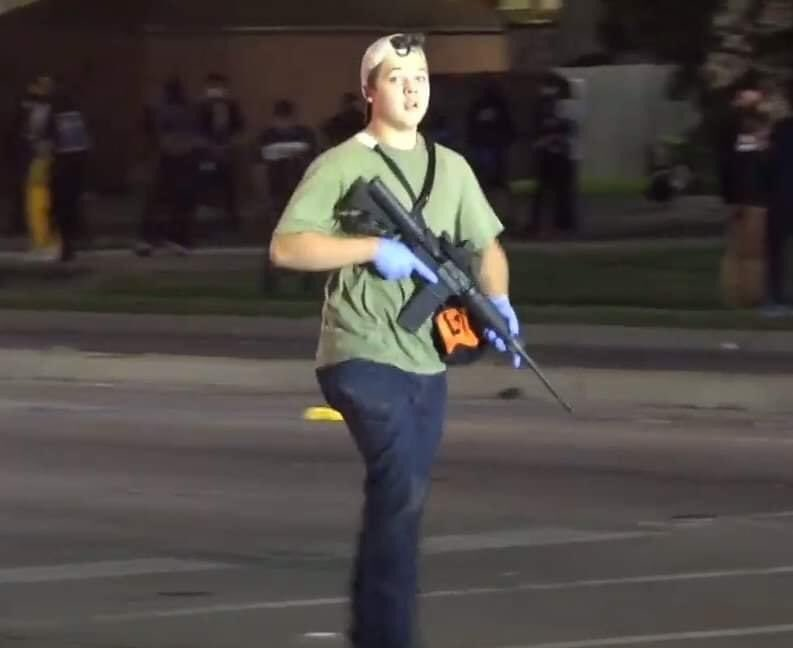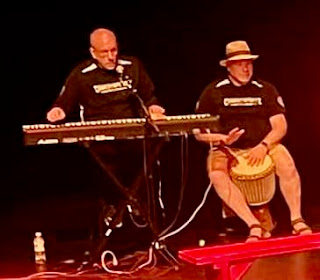Predicting the Next One
The next school shooter will probably look like this kid.
When I was four years old, my parents gave my younger brother and me our first Lego set. It was 1965, and Lego came only in red, yellow, and white bricks of varying lengths. We took that set and made ourselves a pair of pistols. Our bullets were smaller bricks we hurled at each other.
There had never been any kind of toy gun in the house, nor would such toys be permitted for many years to come. Our father was a pacifist, a conscientious objector to the draft, and a member of the Fellowship of Reconciliation. While we did watch a lot of television, it all fell within the "family hours" of prime time: animal shows, Disney, family-oriented sitcoms. The only exceptions were Lost in Space and Batman, campy fantasies which, nonetheless, gave us an appetite to shoot each other with lasers. The G.I. Joes we got for Christmas in 1969 were not soldiers, but explorers (mine was an astronaut; my brother's was an oceanographer)--but they did come with tiny guns, which we spent many hours trying to manipulate with their stiff, unposable fingers.
I raised two children of my own, and have parented three step-children. Like my own parents, I have not been one to encourage war play; the only gun-like toys I permitted my son were the small ones that came with Star Wars action figures and a Playmobil Western village. Nonetheless, the boys' pretend time with those toys featured a great deal of shooting, and my now-adult son's tastes in video games centers on first-person shooters. The stepson who came into my life as a teenager did not seem to care for guns, but is a professional wrestling fan, and spent many an hour playing war-themed video games with his buddies.
And finally, I must admit that when video games are a part of my life (as they are at present), I do have a taste for violent action, though I've never cared for first-person shooters.
The girls I've raised, on the other hand, have had little or no interest in such things. My daughter had Barbies and enjoyed designing clothing for them. As a teenager, she spent many hours on The Sims, a computer game that manipulated characters through a variety of social situations. My stepdaughter is an avid sports fan whose down time centers on funny videos.
I can expand my anecdotal sample to include three more brothers and a variety of nieces and nephews, and the experience continues to be consistent: the boys' play preference is decidedly on the side of violence, while the girls prefer gentler pursuits.
As an elementary music teacher, I work with hundreds of young children. At this point in my career, have had several thousand students. My experience with them is consistent with what I've seen in boys and girls I'm related to: boy play is far rougher than girl play. That's true in my classroom, as well: I rarely have to reprimand a girl for whacking another child with a mallet, pretending a ukulele is an assault rifle, or abusing an instrument. Girl misbehavior is typically social, chatting with friends, braiding each other's hair, whispering hurtful things to a classmate. I don't think I've ever had to send a girl to the office for hitting another child, but there have been plenty of boys who've done just that.
As I mentioned earlier, I have not been studying these differences as a scientist. It's just what I've observed--and what my colleagues have also observed. If you were to tell any of us that a teenager went on a shooting rampage, we'd assume the shooter was a boy; and so far, in the history of mass school shootings, that's been the gender of every single perpetrator.
Three decades ago, there was, briefly, a movement among male poets and philosophers to address the violence that seems to be hard wired in our gender. There was exploration of mythology, ritual, and the initiation traditions of pre-modern cultures. The quintessential work in this field was Iron John, a book by poet Robert Bly that used the allegory of a folk tale to diagnose a sickness in the way modern Western culture treats boyhood and adolescence. In Bly's opinion (and please note, I read the book a quarter century ago, so I may very well be way off the mark in this description), our society is suffering from its abandonment of coming-of-age rites for young men. Boys needs models and methods for channeling their masculine energy into creative, productive lives, but they can only accomplish this if they are allowed to experience their inner wild man.
I remember enjoying Iron John; it was certainly a good read. I also remember feeling uneasy at some of Bly's conclusions. While (as noted earlier) my inner fantasy life always had a typically boyish violent edge to it, I never cared for loud, reckless rampaging. I wasn't that kind of boy, and I never became that kind of man. But I certainly saw enough of my peers engaged in such pursuits to know it was, at least, an aspect of young masculinity in general. I was skeptical, as well, of Bly's prescription for addressing the problem. I believe there are plenty of ways in which Western culture channels boy energy into vigorous, initiatory pursuits: sports, Scouting and other youth organizations, martial arts, and, yes, hunting and fishing. Everywhere I look, I see opportunities for boys to be mentored and initiated into young adulthood. By and large, I think we of the Western world understand, and have always understood, that young people need lessons, rituals, and mentorship to help them make the transition in



Comments
Post a Comment